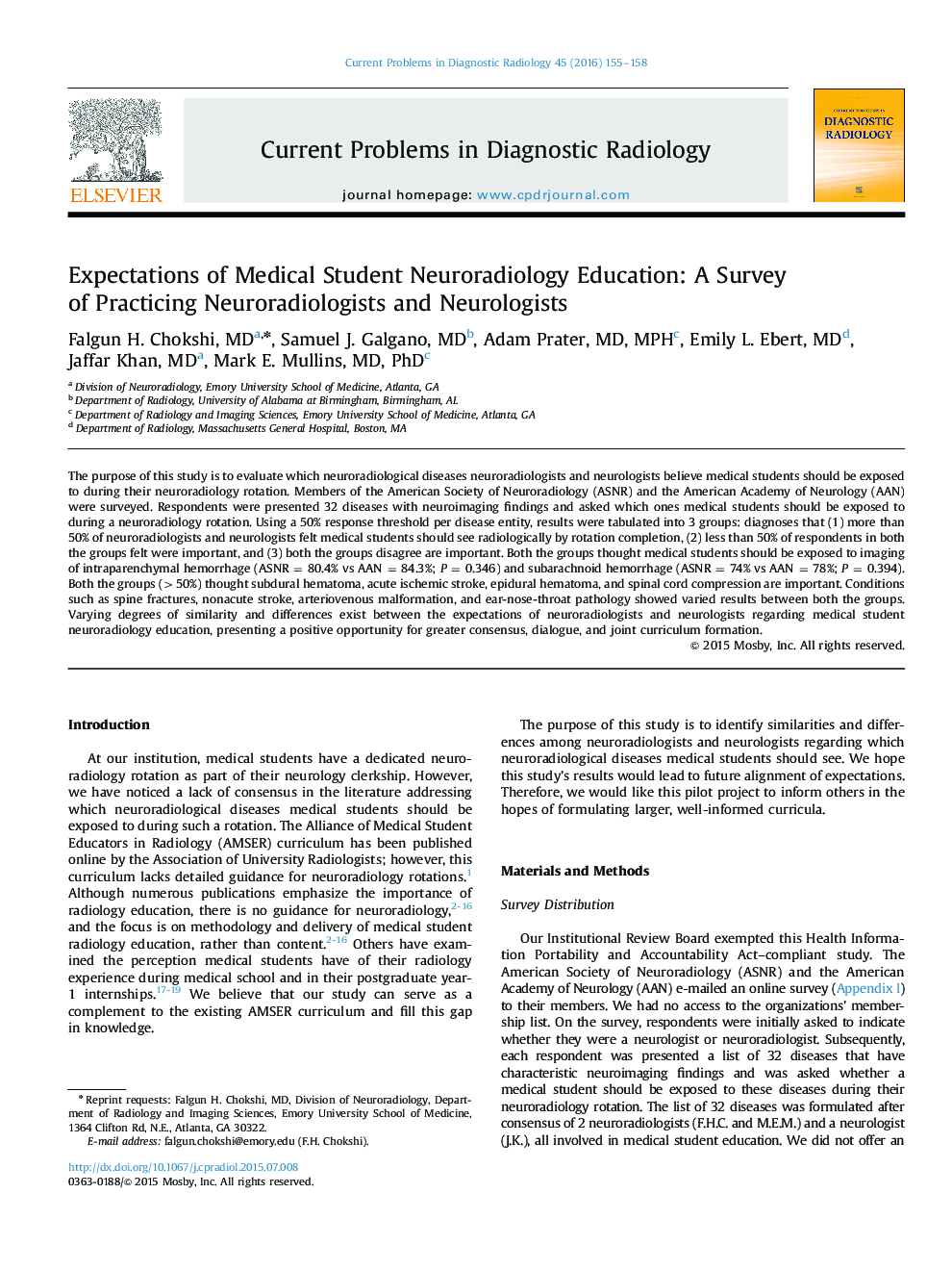| Article ID | Journal | Published Year | Pages | File Type |
|---|---|---|---|---|
| 4223374 | Current Problems in Diagnostic Radiology | 2016 | 4 Pages |
The purpose of this study is to evaluate which neuroradiological diseases neuroradiologists and neurologists believe medical students should be exposed to during their neuroradiology rotation. Members of the American Society of Neuroradiology (ASNR) and the American Academy of Neurology (AAN) were surveyed. Respondents were presented 32 diseases with neuroimaging findings and asked which ones medical students should be exposed to during a neuroradiology rotation. Using a 50% response threshold per disease entity, results were tabulated into 3 groups: diagnoses that (1) more than 50% of neuroradiologists and neurologists felt medical students should see radiologically by rotation completion, (2) less than 50% of respondents in both the groups felt were important, and (3) both the groups disagree are important. Both the groups thought medical students should be exposed to imaging of intraparenchymal hemorrhage (ASNR = 80.4% vs AAN = 84.3%; P = 0.346) and subarachnoid hemorrhage (ASNR = 74% vs AAN = 78%; P = 0.394). Both the groups (>50%) thought subdural hematoma, acute ischemic stroke, epidural hematoma, and spinal cord compression are important. Conditions such as spine fractures, nonacute stroke, arteriovenous malformation, and ear-nose-throat pathology showed varied results between both the groups. Varying degrees of similarity and differences exist between the expectations of neuroradiologists and neurologists regarding medical student neuroradiology education, presenting a positive opportunity for greater consensus, dialogue, and joint curriculum formation.
